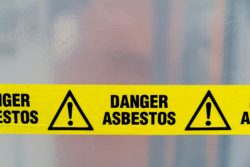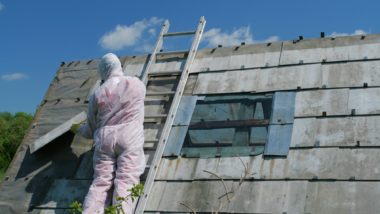Top Class Actions’s website and social media posts use affiliate links. If you make a purchase using such links, we may receive a commission, but it will not result in any additional charges to you. Please review our Affiliate Link Disclosure for more information.
If you or a loved one suffers from an asbestos-related disease, and you are seeking legal help, pursuing an asbestos claim may seem daunting.
The are several factors affecting the length of time a lawsuit can take including the court, the evidence, witnesses, and the state of the plaintiff’s health.
Stages involved in an asbestos claim
Those exposed to asbestos — often construction and manufacturing workers — are turning to litigation, alleging that they developed asbestos cancer after exposure to the dangerous fibers, often while on the job. Like every case that goes to court, the typical asbestos claim involves numerous steps.
Once a diagnosis has been made and a lawsuit filed, the court sets a date for a settlement conference. Depending on the jurisdiction, this may be set for anytime between three months and a year after the filing.
In the meantime, the two parties gather and share evidence, witness lists, and depositions from experts, a process known as discovery. When the settlement conference takes place, the parties inform the judge as to whether or not the case is ready for trial. If so, a trial date is assigned, generally within six months to a year.
Most injury lawsuits wind up settling before they actually go to trial. Often, something that comes up during the discovery process will trigger a settlement.
How long does an asbestos claim take: contributing factors

- Jurisdiction: Because asbestos cases have been common over the past few decades, with over 700,000 claims involving 8,000 defendants, it is the longest-running tort action in U.S. legal history. Some jurisdictions have set up special departments specifically for asbestos litigation. In other jurisdictions, asbestos lawsuits are treated no differently than any other tort action. This can result in delays and postponements.
- Health and age of the plaintiff: An asbestos disease victim who is elderly and in a late stage of the disease may have their case fast-tracked in order to ensure a resolution before their potential death.
- The complexity of the case: A lawsuit filed by someone who worked in the same machine shop or shipyard for decades will have an easier time of it than a construction worker whose job took them to many different sites over the years. New evidence and/or witnesses for one side or the other can also cause delays.
- The number of plaintiffs: A case involving only a single claimant is likely to proceed much more quickly than a class action lawsuit or multi-district litigation.
What happens to an asbestos claim after death
Should the plaintiff succumb to an asbestos disease before the case is decided, the victim’s claim becomes part of the estate and the case continues with the executor or administrator in place of the plaintiff. Family members may also file a wrongful death lawsuit, arguing that a company’s products played a role in the death.
Can I file an asbestos lawsuit?
Even if a person has not been diagnosed with an asbestos-related disease, they may still file a lawsuit for asbestos exposure or join a class action. If successful, they may receive money to defer the costs of ongoing medical monitoring for symptoms.
Filing a lawsuit can be a daunting prospect, especially in the wake of a cancer diagnosis or a loved one’s death. Top Class Actions has laid the groundwork for you by connecting you with an experienced attorney. Consulting an attorney can help you determine if you have a claim, navigate the complexities of litigation, and maximize your potential compensation.
Understanding asbestos
Asbestos is a mineral that was commonly used in construction and manufacturing materials for decades. Unfortunately, asbestos has since been found to be a human carcinogen—that is, a substance capable of causing cancer in humans. When asbestos fibers are inhaled, they can build up in the lungs and cause a number of major complications, including mesothelioma, lung cancer, and asbestosis.
“There is no ‘safe’ level of exposure for any type of asbestos fiber,” says the Occupational Safety and Health Administration (OSHA). “Asbestos exposures as short in duration as a few days have caused mesothelioma in humans.”
Numerous occupations may be at risk for asbestos exposure, including:
- Automotive mechanics
- Carpenters
- Demolition workers
- Electricians
- Maintenance workers
- Plumbers
- Shipyard workers
- Military personnel
- And more
Some of these occupations may have involved asbestos exposure in the past while others, particularly those involving the restoration or renovation of old properties, may currently involve asbestos exposure through older products.
Although occupational asbestos exposure is most common, people can be exposed to asbestos in other ways.
One notable example was the mass asbestos exposure seen during and in the aftermath of the 9/11 terrorist attacks. Asbestos was one of many toxic substances found in the dust released by the ruble of the terrorist attacks. First responders and local residents may have been exposed to asbestos through this dust.
Another notable way to be exposed to asbestos is through secondary exposure. If someone brings home clothes with asbestos fibers, family members or other people they come into contact with could breathe in the fibers.
Consequences of asbestos exposure
Lung cancer and mesothelioma can both result from asbestos exposure. However, mesothelioma is almost always associated with asbestos, whereas lung cancer can be caused by a range of factors including asbestos and smoking cigarettes.
Mesothelioma is a very rare cancer with only around 2,800 cases of the cancer diagnosed on a yearly basis in the United States, almost all of which are attributed to asbestos. In contrast, around 222,500 lung cancer cases are diagnosed each year, but most of them — around 90% of lung cancer cases — are attributed to smoking. Around 10 percent of lung cancer cases can be attributed to other causes, including asbestos exposure.
Though lung cancer and mesothelioma are different kinds of asbestos-related disease, they can present with similar symptoms which may make diagnosis challenging. However, one major difference between lung cancer and mesothelioma are the time each cancer takes to develop. Asbestos lung cancer may appear around 15 to 35 years after a person was exposed, whereas mesothelioma can take between 20 and 50 years to develop, according to the American Cancer Society.
These time periods can provide insight if a medical professional is trying to determine if a case of lung cancer or mesothelioma was linked to asbestos exposure. In thinking through the question of how long an asbestos claim may take, it may help to consider whether your health condition can be clearly linked to asbestos, or to another factor.
Given that lung cancer and mesothelioma can take many years to develop, discerning this can be a difficult and time-consuming endeavor.
If you or someone you love have been diagnosed with mesothelioma after exposure to asbestos, you may be able to file a lawsuit and pursue compensation.
Of course, filing a lawsuit cannot take away the pain and suffering caused by a cancer diagnosis, nor can it bring a loved one back to life, but it can at least help to alleviate the financial burden incurred by medical expenses, lost wages, and more.
Filing a lawsuit can be a daunting prospect, especially in the wake of a cancer diagnosis, so Top Class Actions has laid the groundwork for you by connecting you with an experienced attorney. Consulting an attorney can help you determine if you have a claim, navigate the complexities of litigation, and maximize your potential compensation.
ATTORNEY ADVERTISING
Top Class Actions is a Proud Member of the American Bar Association
LEGAL INFORMATION IS NOT LEGAL ADVICE
Top Class Actions Legal Statement
©2008 – 2024 Top Class Actions® LLC
Various Trademarks held by their respective owners
This website is not intended for viewing or usage by European Union citizens.
Get Help – It’s Free
Join a Free Asbestos Cancer Class Action Lawsuit Investigation
If you qualify, an attorney will contact you to discuss the details of your potential case at no charge to you.
PLEASE NOTE: If you want to participate in this investigation, it is imperative that you reply to the law firm if they call or email you. Failing to do so may result in you not getting signed up as a client or getting you dropped as a client.
E-mail any problems with this form to:
Questions@TopClassActions.com.
Oops! We could not locate your form.












